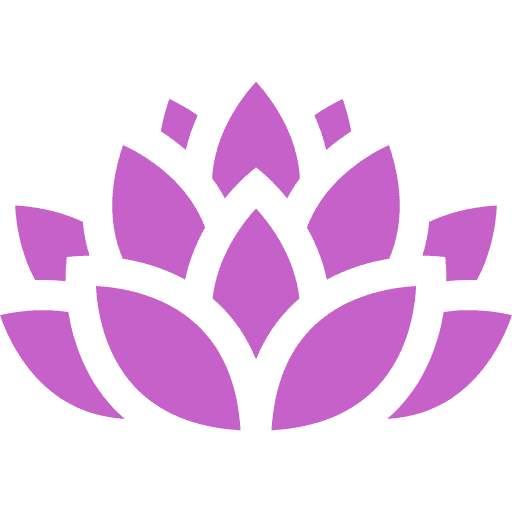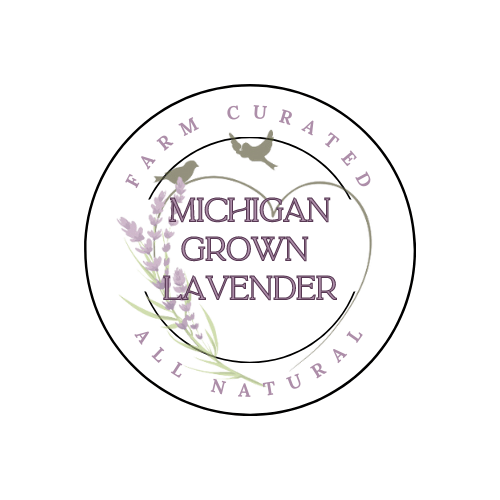About Munstead
Munstead English Lavender, or Lavandula angustifolia ‘Munstead’, introduced in the early 1900s and named after the picturesque “Munstead Woods” in England, is renowned for its mesmerizing and intoxicating scent that captivates those who encounter it. The violet blue flowers of Munstead Lavender not only add a pop of color to any garden but also serve as a favorite on our farm, among lavender-drunk bumblebees, making it a magnificent plant for pollinators.
As a medium-sized English lavender variety that grows to 18″T x 24″W at maturity, Munstead Lavender has become the main crop at our lavender farm. Munstead is a suitable perennial for USDA hardiness zones 5-9. Munstead is an early bloomer with white buds initially and then the blossoms will turn into a range of dusty rose to violet blue color depending on cloud cover and the azimuth of the sun.
You can see the Munstead “white buds” before the sudden pop of violet blue color:

What is Munstead Lavender Good For?
Munstead Lavender for Aromatherapy

English lavender is highly prized in the world of aromatherapy, often considered the gold standard for its soothing and calming properties. It contains high levels of linalool, a naturally occurring compound known for its relaxing effects on both the mind and body.
However, despite its numerous benefits, English lavender is very stingy when it comes to oil production. This scarcity has led to the exploration of alternatives such as lavender hydrosol, which offers a more sustainable and affordable alternative to true lavender essential oil for enjoying the therapeutic benefits of this beloved plant.
Whether you’re looking to unwind after a long day or seeking relief from stress and anxiety, English lavender aromatherapy can be a wonderful addition to your self-care routine. Its gentle fragrance and calming properties make it a popular choice for those seeking natural remedies for relaxation and well-being.
Munstead Lavender for Culinary Dishes

The history of English Lavender for culinary dishes dates back to medieval times. Lavender’s “acquired taste” is currently gaining popularity and you can find lavender culinary creations anywhere from your local coffee houses to lavender infused cocktails at your favorite watering hole.
Munstead’s scent is my absolute favorite (which is the reason why it is our main crop!) It can only be described as intoxicating when I harvest on a hot and humid June day. I would describe the flavor and scent profile that Munstead lavender lends to a dish as “floral.” It is perfect with salads, soups and sweet treats.
Munstead Lavender for Skincare
When processed into a hydrosol, Lavender hydrosol’s pH mimics your skin’s pH. This makes Munstead lavender hydrosol perfect for any type of skin from dry to balanced to oily. Spritz in your hair for a “next day no-poo alternative” or on your face for a balancing toner.
Munstead Lavender for Crafts

Unfortunately Munstead lavender’s dry buds are not the most beautiful variety of dried lavender buds for wreaths, dried bundles or any type of craft that has the buds exposed. Munstead buds have a tendancy to dry brown and fall out. I guess what I am saying is their dried buds are outright ugly. They do lend a beautiful scent in lavender wands (where the buds are hidden from sight!)
Natural Bug Repellent
Lavender naturally repels bugs. I often forget to use insect repellent when I leave my property. Give the green lavender leaves a squeeze to release the lavender scent and rub the scent on your arms and legs or spray lavender hydrosol directly on your skin to test the possibilities.
How to Plant & Care for Munstead Lavender

Munstead Lavender prefers a sunny spot (8+ hours) plus well draining, alkaline and sandy soil with a soil pH between 6.7-7.3. Planting on a sunny slope will produce best results.
You should fertilize and prune your Munstead two times a year (at the same time.) I recommend dolomite lime as the only fertilizer that you use. Nitrogen heavy fertilizers will kill your plant or slow bud/flower production.
The first time will be a light prune when your lavender is coming out of winter dormancy coupled with 1/4 cup of dolomite lime 6 inches from the base of the plant. The second time will be hard prune when you are done harvesting coupled with 1/4 cup of dolomite lime 6 inches at the base of the plant.
We do have a general comprehensive lavender growing guide available with more detailed information about creating the ideal conditions for your lavender garden..
Growing Munstead Lavender from Seed

For a lavender that was not bred to be grown from seed, Munstead is extremely easy to germinate from seed. You do not need to cold stratify Munstead seeds but you do need to give them plenty of light and heat to germinate. Munstead Lavender germinates just as quickly as lavender that was bred to be grown from seed: 3-7 days under ideal conditions. We go into great depth on germinating lavender from seed in this guide.
Growing Munstead Lavender as an Indoor Plant
Munstead can be overwintered inside and for up to one year. We do sell our Munstead plants all year round so we do give guidance on overwintering. It is not recommended to grow inside after a year as Munstead is a medium sized English lavender and has a healthy sized root system. There are many compact lavender plants (ie Rosea, Ellagance Snow, Ellagance Purple) that would be suitable for indoor enjoyment.
To overwinter a small Munstead plant indoors, make sure your pot is the right size and your plant does not become root bound. Continue to “pot up” if it is root bound. Use cactus soil for the potting medium. We water our indoor lavender “from the bottom.” This means use a saucer under your pot and fill it with water. Allow the water in the saucer to dry out for two days before filling with water again. While lavender does not care for fertilizer, indoor lavender plants will need a light application of indoor houseplant fertilizer monthly. Keep your lavender in a south facing window in the warmest room in the house. Lavender needs ample light to flourish so it is a good idea to have a grow light adjusted to 12-15″ above the plant.
Munstead Lavender Bloom Time on Our Farm
Munstead is an early bloomer. Munstead is the first to grace us with it’s white buds on our farm! Our farm is located in a “microclimate” in Southwest Michigan. Our farm is one of the first to bud and bloom. There is only one other lavender farm located in the same microclimate that buds and blooms on the same cycle as our farm! Check out Michigan Lavender Bloom Schedules.
Munstead typically sends up its buds the week after Mother’s Day on our farm. Munstead’s blooms start erupting the week of Memorial Day Weekend on our farm. Munstead’s final blossoms are usually harvested by the 3rd or 4th week of June.
Again, we live in a bizarre microclimate so our lavender is first to arrive and first to depart in Michigan. If you want to see our Munstead in bud or bloom, I highly recommend following Twin Flame Lavender Farm’s facebook page where we give regular bud and bloom updates!
Harvesting and Processing Munstead Lavender
Typical processing methods for Munstead Lavender are vinegar or oil infusions, extracts & hydrodistillation. Unless copious amounts of Munstead is grown, steam distillation for oil is not recommended as Munstead is stingy with its oil. Drying buds are not recommended as the buds will dry brown so they are less aesthetically appealing than other varieties that produce brilliant colored dried buds.
Buy Munstead Lavender Plants For Sale
We do grow and sell Munstead lavender plants all year long. They are one of the varieties that may be included in our “Grower’s Choice 6 Pack Lavender Plants.” We do pick out 6 of the most viable and healthy lavender choices ready to go to a new home out of the 12 varieties we grow for your 6-pack. If you are specifically interested in Munstead for your 6-pack, please contact us for availability prior to ordering.

Live English Lavender Plant 6 Pack For Sale | Hydroponic Starts
Buy Lavender Plants in a 6 Pack and Save!
This English lavender plant offering is for six different varieties of “grower’s choice” rooted starter lavender plugs. You will be pleasantly surprised with our different varieties of lavender: we have purples, blues, pinks and white! Comes with planting and care instructions.

Lavender Infused Recipes Cookbook | INSTANT DOWNLOAD
This book will address common misconceptions surrounding cooking with lavender and provide expert tips on balancing its flavor profile in different dishes. By dispelling any doubts or uncertainties, we aim to empower even those who have never ventured into using lavender with cooking or baking before.
Renee started out as an avid real estate blogger in 2006. Opting for a less stressful life, Paul and Renee moved to Michigan in 2018 and started a lavender farm in 2019.
There are very few resources available to aspiring lavender farmers for growing lavender, lavender aromatherapy and lavender culinary infusion.
Renee hopes to change and shake up the world of lavender by sharing her knowledge and experience she has gained by being a lavender farmer and aromatherapist with lavender lovers all over the world.
Discover more from Twin Flame Lavender Farm Michigan
Subscribe to get the latest posts sent to your email.












